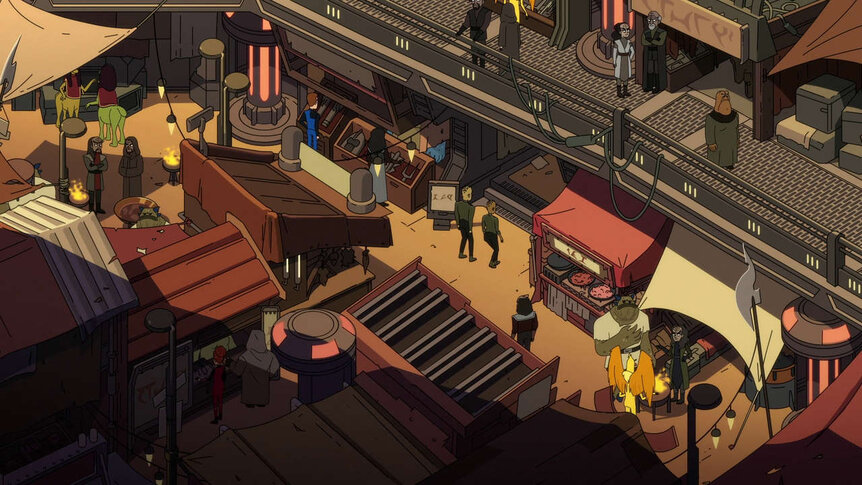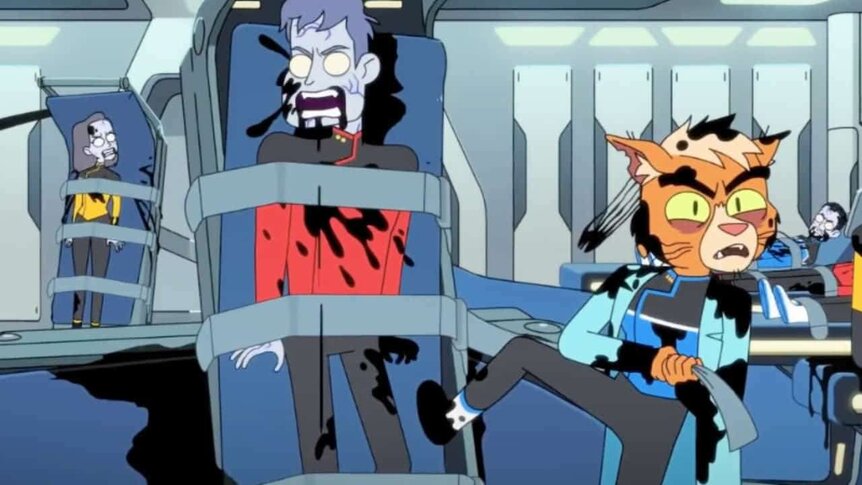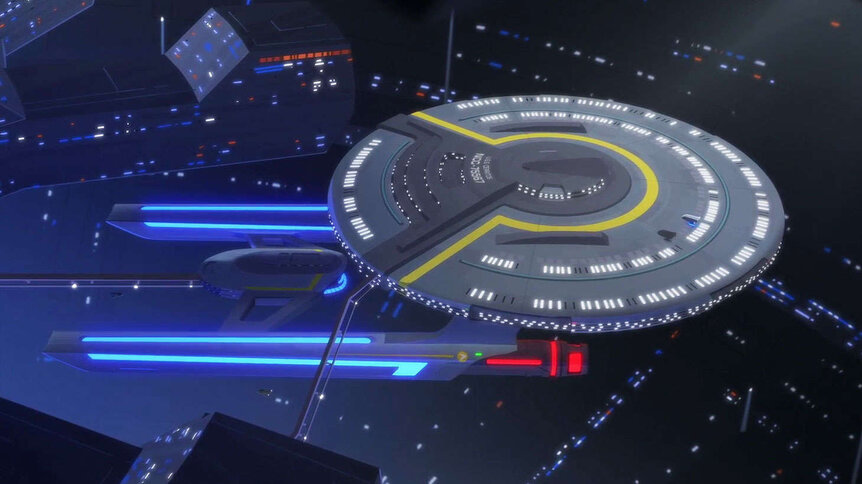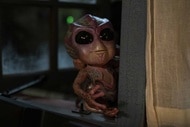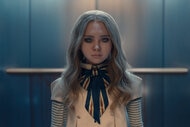Create a free profile to get unlimited access to exclusive videos, sweepstakes, and more!
Three ways Lower Decks makes Star Trek more three-dimensional
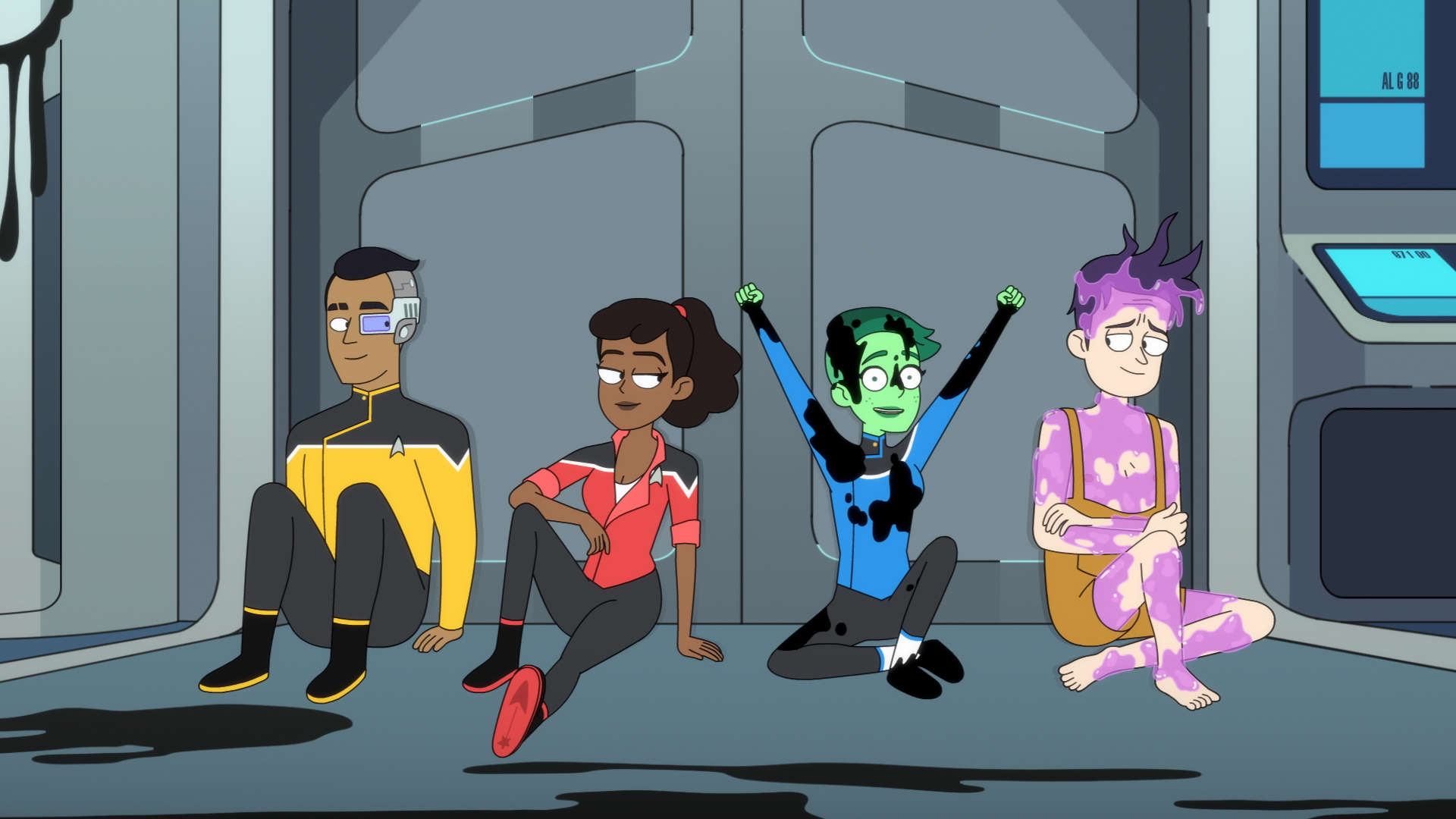
With the release of Star Trek: Lower Decks on CBS All Access, the future of Trek is going boldly where it has never gone before: the half-hour animated comedy. While Star Trek has gone animated before, Lower Decks is the first completely original animated series, with a cast of characters, and a ship, that was completely invented for the show. And while the 2D animation may be a departure from any major Star Trek property since 1974, the show has also provided a new opportunity to expand the possibility of what Trek can do.
Here are three ways that Lower Decks has already made Star Trek even more three-dimensional.
It allows for strange new worlds
During the era of The Next Generation through Voyager, Trek made much usage of Paramount Pictures’ Stage 16, which functioned as the location for the majority of temporary swing sets for the production. This stage, nicknamed ‘Planet Hell’ by Trek productions, served as the location for a vast majority of alien worlds, the kinds of locations that away teams would beam to for missions that took them off the ship. The demands of a production schedule being what they were, it was usually unlikely that we’d see more than one or two locations on a particular world.
Comparatively, in the second episode of Lower Decks, Ensigns Boimler (Jack Quaid) and Mariner (Tawny Newsome) find themselves attempting to track down a Klingon general on the planet Tulgan IV. The pursuit takes them across the bustling city, which is chock full of various districts and cultural neighborhoods for the different alien races that have set up communities on the planet. Areas like “Little Qo’noS,” the Klingon district where the general first vanished, or a Risian district, representing the oft-referenced “pleasure planet” of Risa. It’s a small thing, but it has a major impact.
Within just those few moments of screen time we get this feeling of Tulgan IV as a lived-in, existing world where various cultures would take up roots, and — like immigrants building communities in our time period — would craft spaces for themselves to hold on to their culture and claim a semblance of home even as they create a life for themselves elsewhere. It hammers home the idea of the galaxy as this vibrant mix of cultures and does away with the often unintentionally homogenized spaces created simply due to the impossibilities of building a brand new set in the time available to shoot.
Similarly, while animation backgrounds still cost time and money, and the work of talented artists to create, the power of Lower Decks to create alien worlds means getting to see places like the crystal-heavy world visited by the away team in “Temporal Edict” and the lush flora and fauna of the Galardonian homeworld in “Second Contact.” These alien worlds are a major departure from the constraints of Stage 16 or the random locations one might find near the Southern California set of Picard or Pinewood Studios Toronto for Discovery.
On the inverse, the show does seem to have a small stable of repeated backgrounds onboard the USS Cerritos. This mimics the live-action Trek shows which tend to use permanent sets on a soundstage for shipboard activities, and provides a touch of familiarity in doing so, giving us an anchor to the Trek we already know and love while the characters are “at home.”
It seeks out new life and new civilizations
In recent iterations of Star Trek, makeup and CGI technologies have helped bridge the gap of having aliens who truly look alien without looking fake, and aliens that look more real but are some variation of "humans with bumpy faces." Notable examples are Saru (Doug Jones), the Kelpian commander on Discovery, and the somewhat controversial new design of the Klingons for the show as well. But these advances aside, it’s essentially a battle between hours in the makeup chair or the possibility of veering into the Uncanny Valley when placed next to human actors.
The 2D animation of Lower Decks smooths the edges a bit on this because the humans on the show are cartoons, the aliens are able to be given much more unique and interesting designs that look more normalized by comparison, allowing for the seamless inclusion of characters like Ensign Tendi (Noël Wells) and Doctor T’Ana, a Caitian (in a nice throwback to The Animated Series).
This paradoxically does two things at the same time: it creates aliens that look legitimately alien while also presenting them as clearly belonging in the same universe as the humans they encounter. Through this, Lower Decks uses its medium to further Gene Roddenberry’s original “Infinite Diversity in Infinite Combinations” philosophy.
It boldly goes where Trek shows have gone before
Fans of Disney Parks’ Tomorrowland areas are likely aware of what is referred to as "The Tomorrowland Problem:" The struggle with the fact that tomorrow eventually becomes today and attractions based around futurism eventually feel dated at best, and massively off course at worst. Such is the case with Star Trek. The original Star Trek is intended to be a bold, optimistic view of the future and it very much was... in the 1960s.
But by the time even Next Generation came along, much of the ‘advanced’ technology of that era seemed dated by contemporary standards. Trek creators then find themselves in a quandary, how do you embrace new technologies to continue making a show about the future look like the future, without negating the aesthetic and visual continuity of previous, canon, installments? Newer installments have attempted to address this. The recent films’ Kelvin-universe has more advanced technology due to plundering future tech for its secrets. Discovery season two had Captain Pike (Anson Mount) retrofit the Enterprise in response to the AI antagonist, and of course, Picard was mostly set in 2399, allowing for tech advances since we’d last seen the captain.
But Lower Decks is set right back in 2380, only a year after Nemesis, two years after Voyager. And with good reason, it’s five years prior to the Romulan Supernova and the Synthetics’ Attack on Mars that set much of Picard’s story in motion, so it provides something of a last chance to revisit the Federation of the beloved era that spanned Next Gen, Deep Space 9, and Voyager before things in the Alpha Quadrant take a devastating turn.
A live-action Trek series set primarily in 2380 would have to either throttle back on the technology and risk feeling dated or run into the Discovery issue of suddenly seeming far more advanced than it appeared when we last visited it in 2002 with Nemesis. Through the power of animation, Lower Decks is able to dip right back into this era with a visual style that feels familiar while also still allowing for it to be its own new unique thing within the Trek pantheon.
And, hey Lower Decks creators, if it could also mean the possibility of the occasional guest appearance from some old favorites in the form of voice acting, that wouldn’t be too shabby either. Avery Brooks has some pretty dulcet tones, what’s going on with that old Bajoran wormhole anyway?
